There are times when posting time-sensitive updates might be necessary. For example, you may want to promote limited-time offers or share special announcements.
When you do that, managing who sees this content and for how long is key.
The good news is that WordPress lets you easily set posts or parts of posts to expire. This way, your WordPress site stays up-to-date automatically – no more fussing with old posts.
In this article, we’ll show you how to expire posts or partial post content in WordPress easily.

Why Expire Posts or Expire Partial Post Content in WordPress?
Let’s say you want to give specific users access to your site’s exclusive content for a specific period of time.
Commonly, you can just schedule the post to be published at a specific time and then later update it with an old post notification that it has expired.
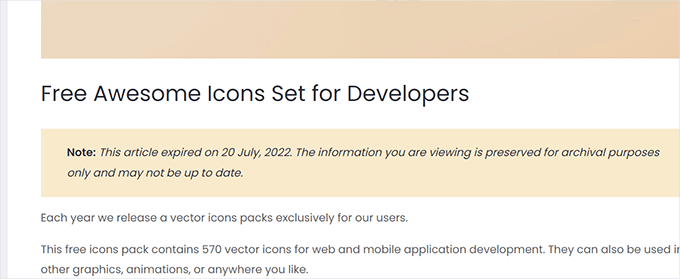
However, this doesn’t give you access control. During that time, anyone can view and access the content.
Even if you don’t need access control, you’ll still have to make the changes at specific times manually.
So, what if you could automate the whole process? For example, you could set an expiration date for your blog post, define what happens to it after that date, and who can access it.
In the following sections, we’ll examine 2 different approaches to easily expiring posts and partial content in WordPress.
The first one gives you more control and lets you make money from your content. Meanwhile, the second method doesn’t give you access control or monetization options but can let you change content after it has expired.
If you’re interested in a particular method, you can click the link to skip ahead in the article:
Ready? Let’s get started.
Method 1. Expire Posts and Partial Post Content with MemberPress
This method is recommended for all users, whether you’re a beginner or a seasoned expert.
We’ll be using MemberPress, the best WordPress membership plugin, which offers powerful tools to expire content and control access to your website.
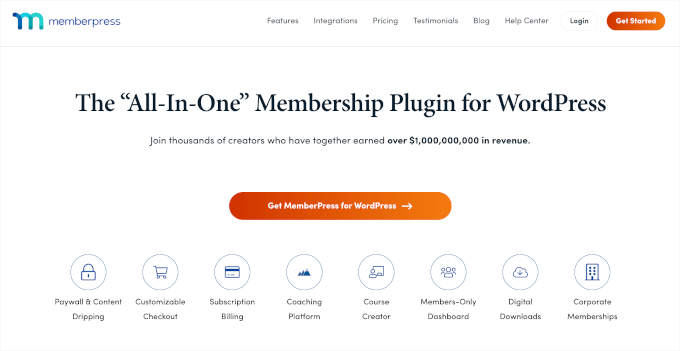
With MemberPress, you can sell membership plans and only make content available to paid users. Plus, you can set up drip content to automatically release content gradually and expire after a set period.
Sounds good? Let’s see how to set this up.
1. Setting Up MemberPress
First, you need to install and activate the MemberPress plugin. For more detailed instructions, you can see our step-by-step guide on how to install a WordPress plugin.
Upon activation, you’ll want to go to MemberPress » Settings and click on the ‘License’ tab to enter your license key. You can find this information in your account on the MemberPress website.

Simply copy and paste your license key, then click the ‘Activate License Key’ button.
After that, you can switch to the ‘Payments’ tab to set up payment methods.

By default, MemberPress supports Stripe and PayPal payment gateways.
Go ahead and select a payment provider from the dropdown and follow the on-screen instructions to complete the setup.

2. Creating a Membership Plan
Next, you’ll need to create a membership plan for your website.
To do this, go to the MemberPress » Memberships page and click on the ‘Add New’ button at the top.
On the next screen, you can enter a title for this membership plan and provide the plan details in the post editor. In the ‘Membership Terms’ section, you will then need to set the pricing and expiration for this plan.
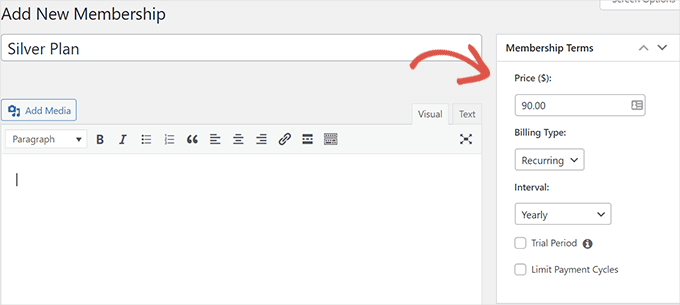
Or, you can create a free plan by setting the price to zero. Don’t forget to click on the ‘Publish’ button to save your changes.
3. Creating Access Rules for Your Expiring Content
Now that our membership plans are set up, the next step is creating access rules.
Access rules allow you to control which content you want users to see. For this, let’s navigate to MemberPress » Rules and click on the ‘Add New ‘button at the top.
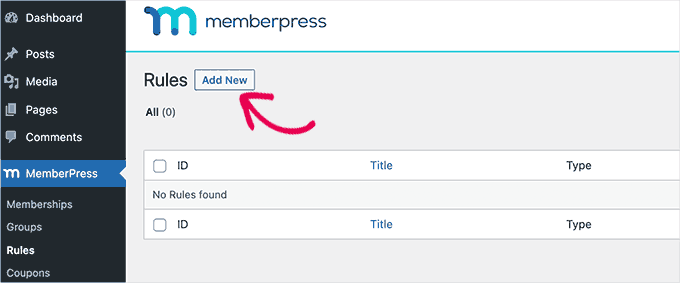
On the next screen, you’ll want to select the content you want to protect under the ‘Protected Content’ option.
You can restrict access by tags, categories, specific posts or pages, partial content on a post or page, and more.
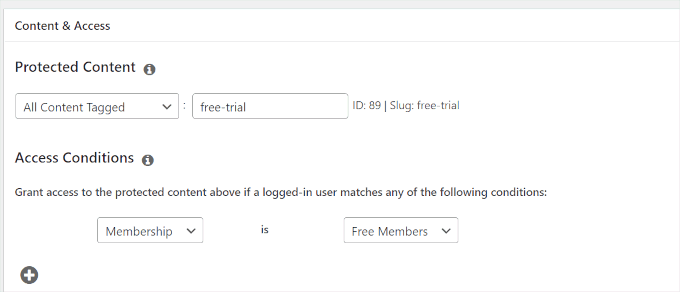
Below that, you’ll need to choose the access conditions.
For instance, in the above example, we protected all content with a free trial tag and gave free members access.
Next, you’ll want to scroll down to the ‘Drip/Expiration’ section. From here, you can choose when to show or expire this content.

For example, we set this access to expire 30 days after a user signs up for our free plan.
If you want to drip this content, then check the ‘Enable Drip’ option. After that, you can choose when this content will be visible to the user and when it will expire.
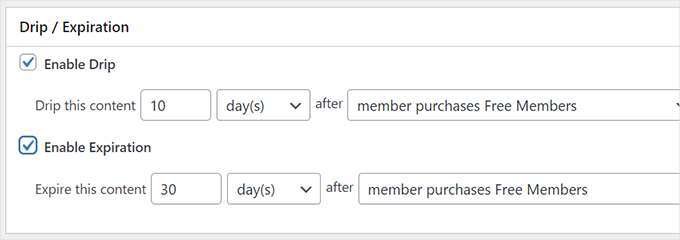
Finally, don’t forget to click on the ‘Save’ button to store your settings.
4. Preparing Expiring Content
Now, based on the rules you have set, you can just edit the posts or pages you want to expire and set them so they are protected.
For instance, we set a rule for protecting all content tagged ‘free-trial.’
To protect content under that rule, we’ll need to add the tag ‘free-trial’ to the post or page we want to expire.
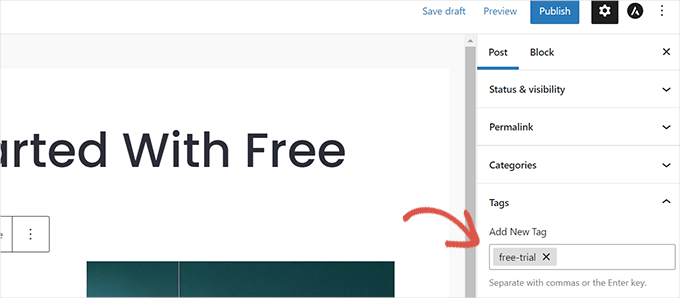
After ensuring that the content you want to expire or protect matches the access rules, you can save or publish your changes.
Don’t forget to visit the post or page in an Incognito tab to make sure everything is working. By visiting the page or posting as a logged-out user, you’ll see the login form instead of post content.

Once the user account meets the content expiration rule, they will no longer be able to see the content.
5. Expiring Partial Content
MemberPress also allows you to expire partial content on a post or page. This means you can set specific sections or parts of a post or page to become inaccessible after a certain time rather than expiring the entire post or page.
To create partial content expiration, let’s head over to MemberPress » Rules and click on the ‘Add New’ button.

Next, you’ll want to select ‘Partial’ under the ‘Protected Content’ option.
Then, simply select the conditions where this rule will apply. For instance, we only want to apply it to users who signed up for our ‘Free Members’ plan.
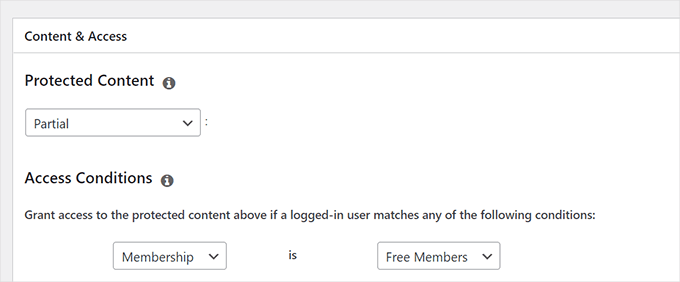
After selecting the condition, you can scroll down to the ‘Drip/Expiration’ section.
From here, you can set when you want this access rule to expire or become available.

Finally, go ahead and click on the ‘Save Rule’ button to store your settings.
You can now edit the post or page where you want to add the expiring content. To the post’s editor, simply add the ‘Protected’ block.
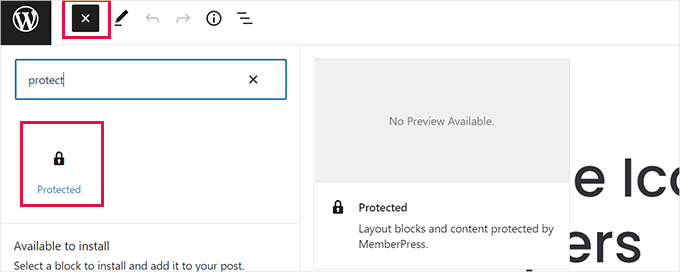
Inside the ‘Protected’ block, you can add the content you want to hide from non-members and the content you want to expire.
Expert Tip: You can use any block you want inside the ‘Protected’ block. It works similarly to the ‘Groups’ block in the block editor.
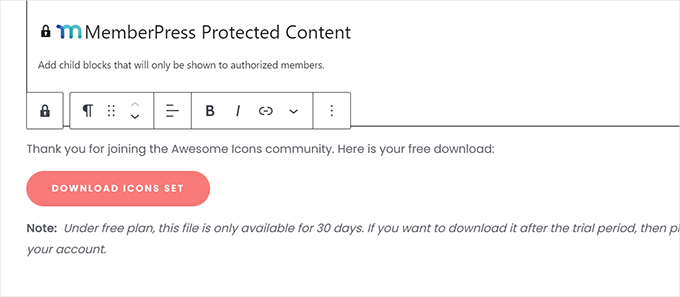
After adding the content, you’ll need to set up the access rules for this block.
Simply look under the block settings in the right panel. From here, you’ll want to find the ‘Access Rule’ section and choose the ‘Partial’ rule that you created earlier.
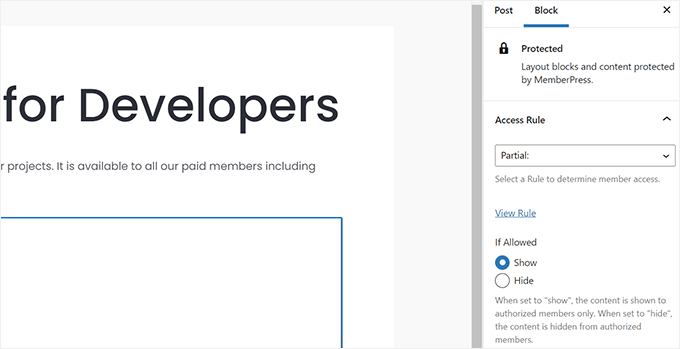
After selecting the rule, let’s select ‘Show’ under the ‘If Allowed’ option.
This tells MemberPress to show the content inside the protected block if the user matches the conditions in the ‘Rule’ selected above.
You can now click on ‘Update’ or ‘Publish’ in the editor and view your post or page in an Incognito browser tab.

From the screenshot above, you should notice that the plugin doesn’t show a login form or any clue that the post content is restricted or contains expiring content.
Let’s change that.
Go back and edit the post, and this time, add another ‘Protected’ block above the one you added earlier.
Select the ‘Partial’ access rule under the block settings. This time, we will select ‘Hide’ under the option ‘If Allowed.’
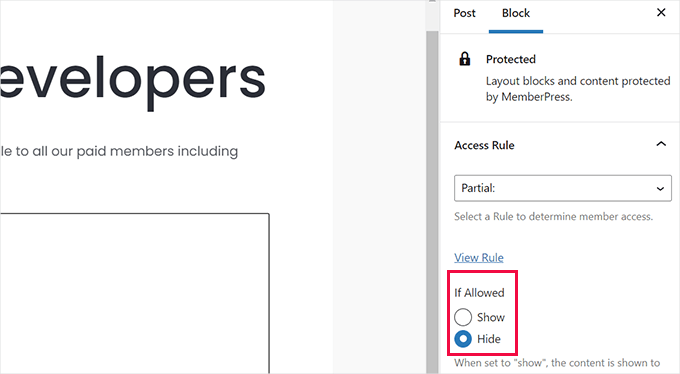
We want this block to be visible to non-logged-in users and users who don’t match our access rules.
Now, you can add hints for users that this content is protected and that they will need to log in to their account to continue.
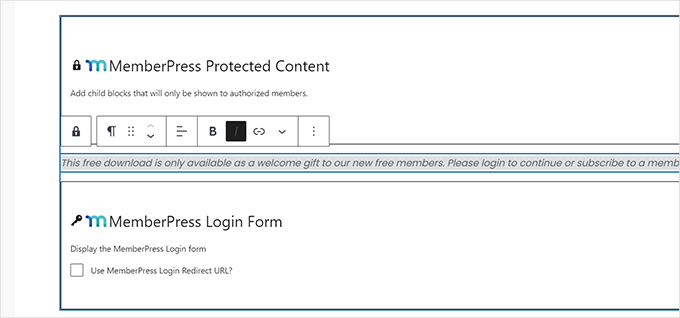
After that, you can add the ‘Login’ block as well.
Once you are satisfied with your changes, go ahead and click ‘Update or ‘Publish.’
You can now visit this post in a new browser tab to see your access rules in action.
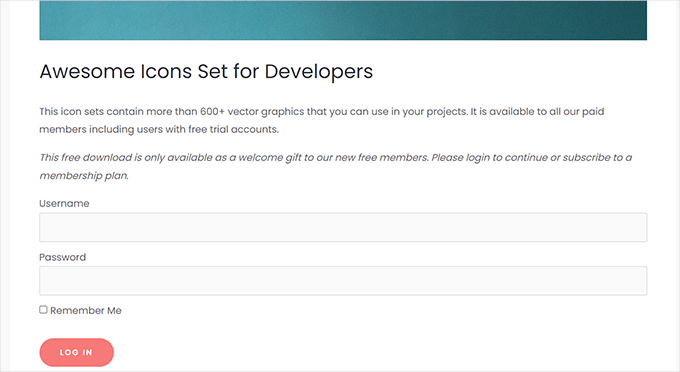
It will show your custom message with the login form to the non-logged-in users.
Users can log in to their account, and if the content hasn’t expired yet, then they will be able to see it.
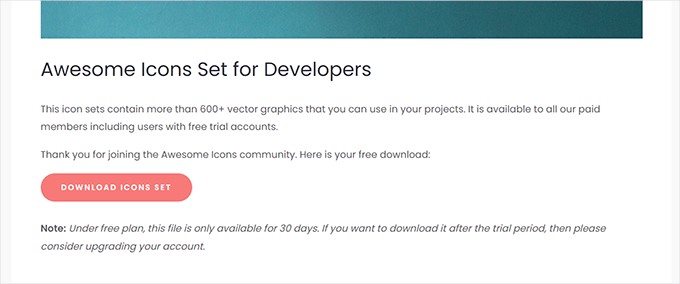
Method 2. Expire Post Content with PublishPress
This method doesn’t give you as powerful access-control features or let you set up paid memberships. However, it does allow you to easily expire posts in WordPress or change post content after a specific date.
There are 2 ways you can do this. The first only allows you to expire posts and show a notice about expiration, while the second approach will let you change content before and after the expiration date.
1. Expire Posts in WordPress with PublishPress Future
You can use this method if you only want to expire a post after a specific time.
First, you need to install and activate the PublishPress Future plugin. For more details, see our step-by-step guide on how to install a WordPress plugin.
PublishPress Pro members will have access to the Future plugin as part of your membership.
Upon activation, you need to click on the ‘Future’ menu item in your WordPress admin sidebar. This will bring you to the plugin’s settings page.
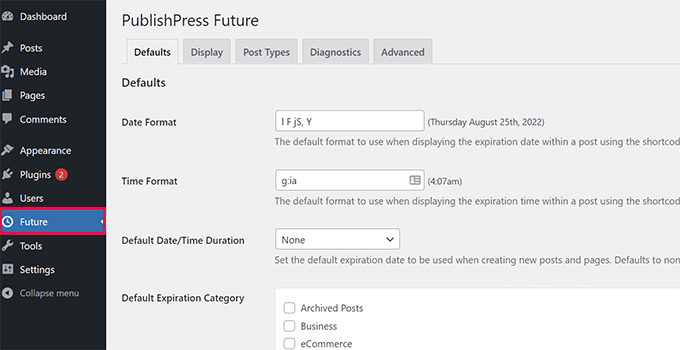
On this page, you can use the plugin’s default settings. These include date and time format, default expiration date duration, expiration category, and email notifications.
While you can review these settings and change them if needed, these default settings will work for most users.
Next, let’s switch to the ‘Display’ tab and enable the ‘Post Footer Display’ option. Below it, you’ll see the text that the plugin will show for posts that are about to expire.
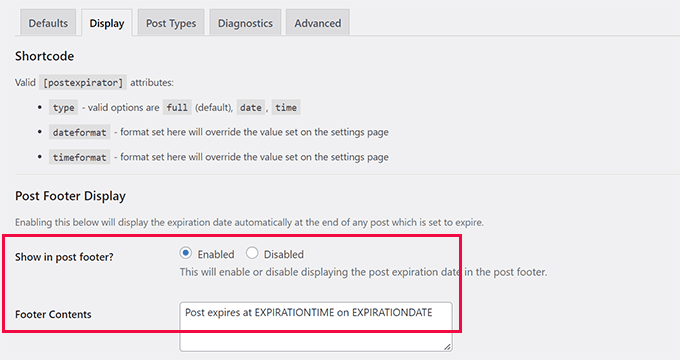
After that, you can switch to the ‘Post Types’ tab. From here, you can select the default actions you want to take for posts, pages, and other post types.
Make sure that you click the radio button beside ‘Active’ so that the feature is available for that post type.
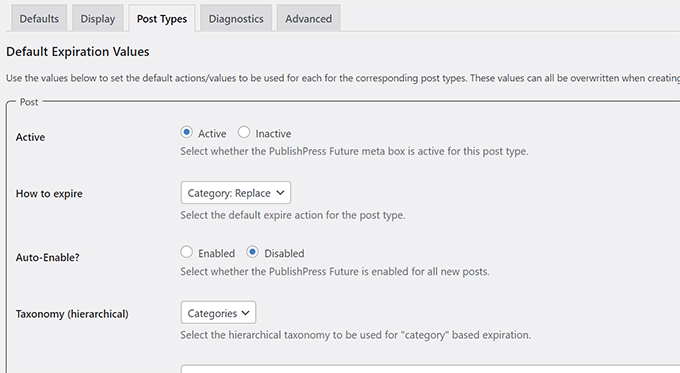
Finally, don’t forget to click on the ‘Save changes’ button to store your settings.
You can now edit a post or page that you want to expire. On the post edit screen, you’ll see a new ‘PublishPress Future’ tab under the ‘Post’ panel.
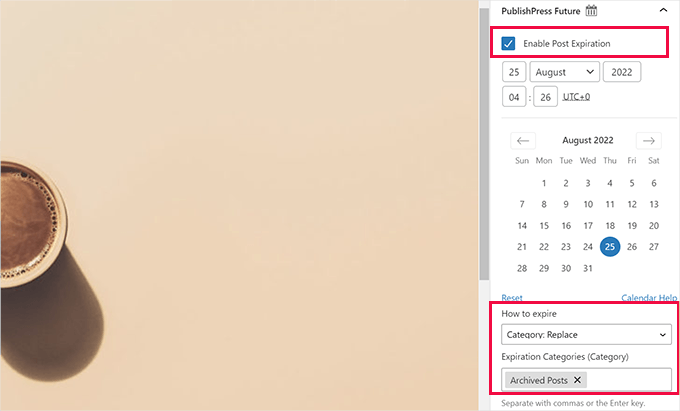
First, you’ll want to check the box next to the ‘Enable Post Expiration’ option. Then, simply choose the date and time for this post to expire.
Under the ‘How to Expire’ section, you can choose which action you want to perform when a post expires. There are several options available.
You can set a post to draft, change categories, add new categories, make a post sticky or unsticky, and more.
For this tutorial, we’ll choose the ‘Category: Replace’ option and set the replacement category to be ‘Archived Posts.’
Once you are satisfied with your changes, you can click ‘Update’ or ‘Publish.’ Don’t forget to visit it in a new browser tab, where you’ll see a notification about the post’s expiration in the footer.
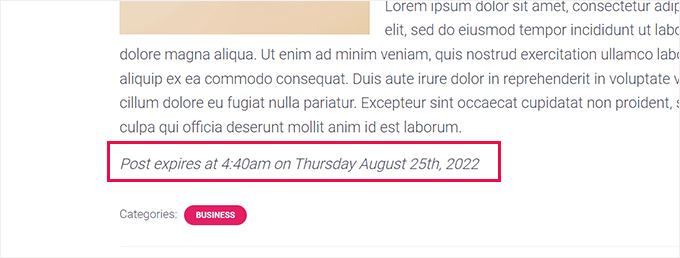
Once the post expires, the plugin will perform the action you have set for this post. For instance, this example will move our post from the ‘Business’ category to ‘Archived Posts.’
2. Expire Post Content or Partial Content with PublishPress Revisions
Unlike the previous method, this approach will give you a little more flexibility.
Basically, you will be able to create two or more versions of your posts that will automatically become public on the set schedule.
First, you’ll need to install and activate the PublishPress Revisions plugin. For more details, see our step-by-step guide on how to install a WordPress plugin.
PublishPress Pro members will also have access to this plugin as part of their subscription, as well.
Upon activation, go to Posts » All Posts and locate the post that you want to expire. Take your mouse to the post title and then click on the ‘New Revision’ link.
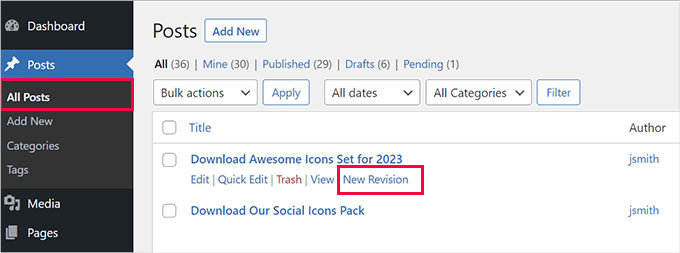
The plugin will then create a duplicate draft for your post and open it in the post editor.
From here, you can make changes to the post. For instance, you can add a notice that this post is expired.
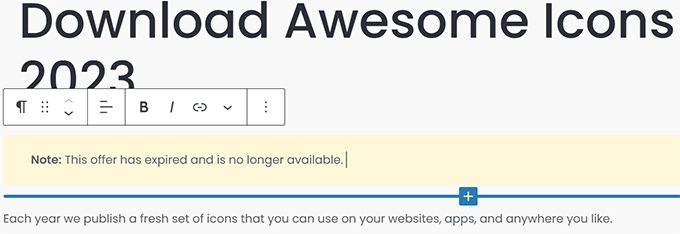
Similarly, you can also replace partial content with something else after the expiration date.
For example, we had a download button in this article, which has been replaced with the text that this download is no longer available.

Once you are done editing, you can click on the ‘Immediately’ button next to the ‘Publish’ option under the ‘Post’ settings.
A calendar should then pop up on the screen.
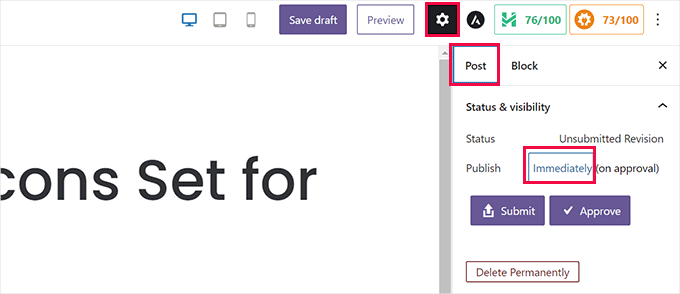
From here, you can set the date and time when you want the old post to expire and be replaced by your new draft.
Once you have set the scheduled date and time, you are ready to save the revision.
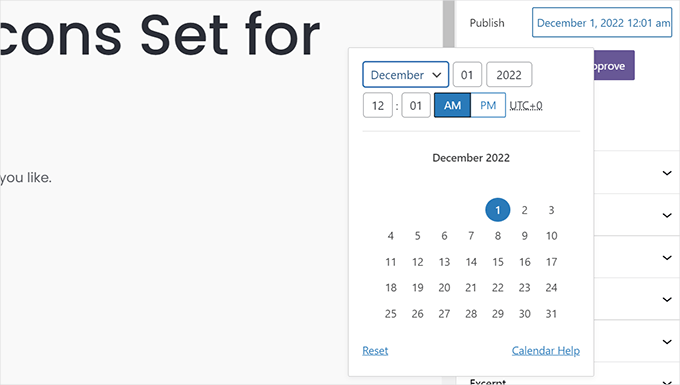
Now, when you click on the ‘Submit’ button, the draft will be submitted for review. It needs to be approved before it’s actually scheduled.
However, if you are responsible for publishing content on your website and don’t need approval from anyone else, then you can simply click the ‘Approve’ button to continue.
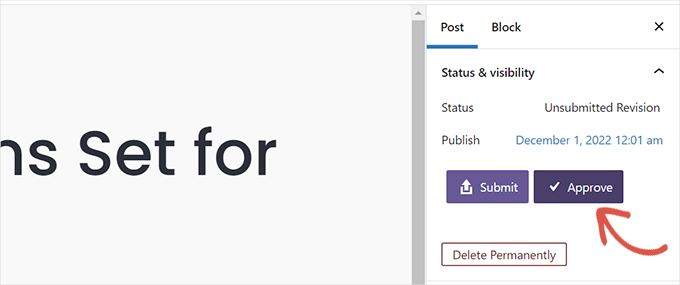
The plugin will now schedule this revision, which will be published at your chosen time.
After that, you’ll be redirected to see a preview of the draft.
At the top of the screen, you’ll see a notification bar with the date and time this draft will go live.
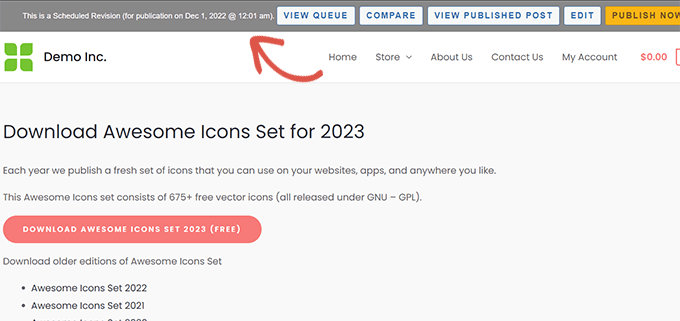
For more details, see our tutorial on how to schedule content updates in WordPress automatically.
And there you have it! We hope this article helped you learn how to easily expire posts or partial post content in WordPress. Next, you may also want to see our guide on how to allow public post previews of unpublished posts and how to efficiently manage post series in WordPress.
If you liked this article, then please subscribe to our YouTube Channel for WordPress video tutorials. You can also find us on Twitter and Facebook.





Jazzper
Apparently this plugin is no longer supporter by its developer. Are there any plugins available that ARE supported which expire posts?
WPBeginner Support
We will be sure to look for an alternative we would recommend and update this article when we are able.
Admin
Andreas S
Hi! Do you know any plugins where I can make limited content and spread around my page with shortcodes? I have a website with different online stores that often have limited offers. It would be great to have a database of all the stores… Store1, Store2, Store3…. and then I apply a store specific shortcode in all the stores… and a database of text portions with dates I can change whenever new campaigns come out.. Sorry for the very bad explanation…. I tried the Timed Content plugin but it didn’t work exactly as I wanted.
WPBeginner Support
It sounds like you’re wanting to use reusable blocks. We have a tutorial on how to use those here: https://www.wpbeginner.com/beginners-guide/how-to-create-a-reusable-block-in-wordpress/
Admin
Syaifuddin
Hello,
I just bump into this post while looking for a solution where WP can automatically draft all posts after certain period. For instance if I publish the post on 1st January, it will automatically unpublish (status change to draft or expired) on 31st January. If the post was published on 4 March, it will expires on 5 May.
I need this feature because I want to set specific time for my subscriber to read the post within allowable time before it’s hidden/unpublish from front end.
Please help.
WPBeginner Support
From the sound of what you’re wanting, you would want to use the plugin in the article.
Admin
David
Hey WPbeginner: How can we do this NOW? The plugin in the article hasn’t been updated in more than 2 years…
Stacey
@David, Did you find an updated way to do this? I’m also looking for a way to expire posts without using an abandoned plugin!
WPBeginner Support
We will certainly take a look at other plugin options but the plugin should still be working for the moment.
Admin
Stacey
I tried for days to get this plugin to work and never could. I ended up finding the plugin “WP Content Scheduler With Range”. Even with trying out abandoned plugins, this is the only one I could get to work.
Andrew Norton
This plugin works like a dream however i want the same thing or functionality for posts in widgets. any ideas?
Thembelani
Hi. We are trying to build a mobile app that pulls content from a WordPress page as JSON using a url. The page in WordPress uses Advanced Custom Fields as its underlying structure. None of the content expiry plugins I have tried thus far are able to show/hide content on this page.
Any suggestions ?
Yazmin
Is there a new alternative to Post Expirator? It is failing on our site all of a sudden and we rely on it heavily.
Thanks!
Michaelsbote
Sorry – The Post Expirator does not work with WP 4.4.2.
John Bowden
Just replaced a plugin that no longer worked with Post Expirator. Working like a champ on my site. Thank you!
george pal
I have tested Post Expirator plugin on a multisite installation.
The plugin DOES NOT work.
As soon as it gets enabled there is a php message telling:
Strict Standards: Declaration of Walker_PostExpirator_Category_Checklist::start_lvl() should be compatible with Walker::start_lvl(&$output, $depth = 0, $args = Array) in /volume1/web/wp-content/plugins/post-expirator/post-expirator.php on line 0
Strict Standards: Declaration of Walker_PostExpirator_Category_Checklist::end_lvl() should be compatible with Walker::end_lvl(&$output, $depth = 0, $args = Array) in /volume1/web/wp-content/plugins/post-expirator/post-expirator.php on line 0
Strict Standards: Declaration of Walker_PostExpirator_Category_Checklist::start_el() should be compatible with Walker::start_el(&$output, $object, $depth = 0, $args = Array, $current_object_id = 0) in /volume1/web/wp-content/plugins/post-expirator/post-expirator.php on line 0
Strict Standards: Declaration of Walker_PostExpirator_Category_Checklist::end_el() should be compatible with Walker::end_el(&$output, $object, $depth = 0, $args = Array) in /volume1/web/wp-content/plugins/post-expirator/post-expirator.php on line 0
Except from that, the metabox on wordpress backend admin breaks the responsive layout, see what I mean here: and here:
Leslie Nicole
Thank you! I’ve been reluctant to post “news” as you end up having your archives peppered with out-dated posts. This is plug-in should be really handy!